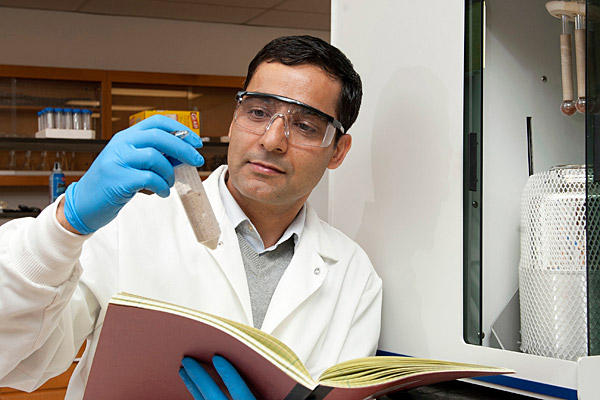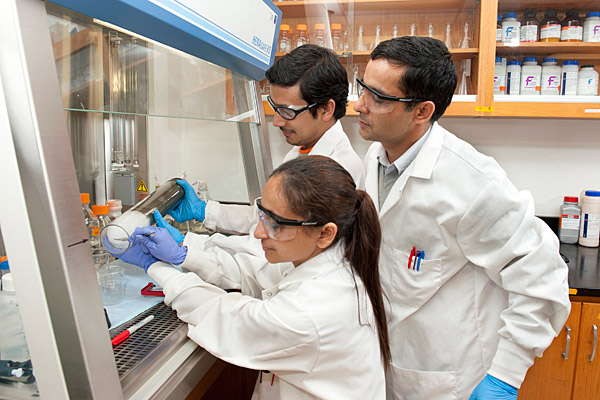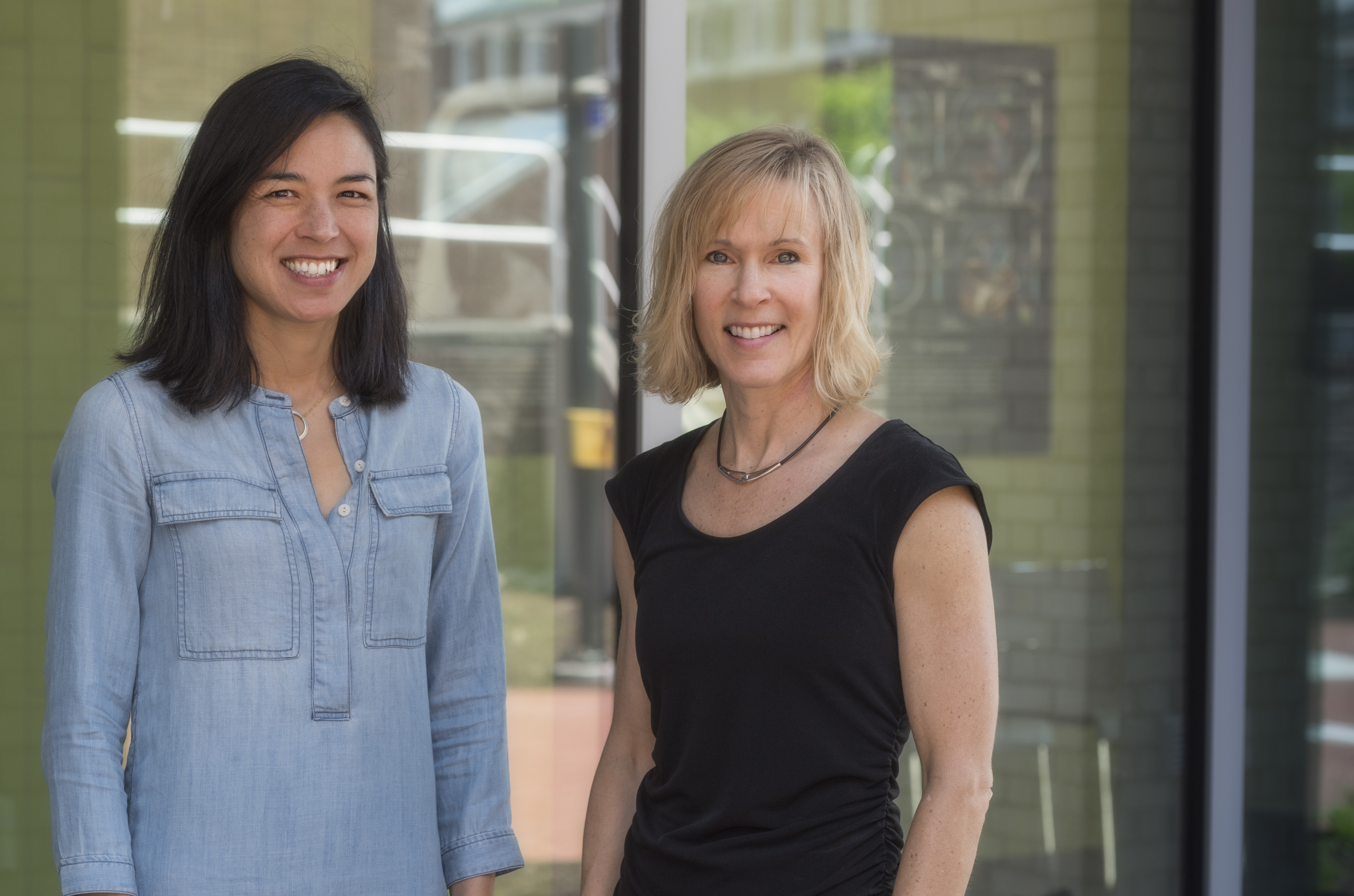


Pollution tracker
UD's Jaisi wins ORAU Powe Award to track down nutrient pollutant in Chesapeake
1:11 p.m., May 9, 2012--Too much of a good thing can kill you, the saying goes.
Such is the case in the Chesapeake Bay, North America’s largest estuary, where an overabundance of nutrients fosters the formation of an oxygen-starved “dead zone” every summer. In its annual health report card last year, the bay earned only a D+.
Research Stories
Chronic wounds
Prof. Heck's legacy
Deb Jaisi, an assistant professor of plant and soil sciences at the University of Delaware, wants to seek out the sources of a key nutrient so excessive that it has become a pollutant in the Chesapeake Bay — phosphorus (P).
Jaisi wants to literally get to the bottom of this nutrient’s influx by analyzing the phosphorus present in a set of sediment cores extracted from the seafloor of the upper bay, middle bay and lower bay. The cores offer a glimpse into the geological and environmental record of approximately the past 75 years.
The Oak Ridge Associated Universities (ORAU), a consortium of 105 major Ph.D.-granting academic institutions, has high hopes for Jaisi’s research. Recently, Jaisi was one of 30 scientists selected nationwide to receive ORAU’s Ralph E. Powe Junior Faculty Enhancement Award. The award is intended to enrich the research and professional growth of young faculty and result in new funding opportunities.
Jaisi will receive $5,000 in seed funding from ORAU and $5,000 in matching funding from UD to launch his Chesapeake study.
According to Jaisi, phosphorus in the bay comes from three primary sources: the land, the ocean, and the buried sediments from where phosphorus is remobilized and reintroduced into the bay. However, current nutrient management efforts focus solely on reducing inputs from land.
“The contribution of these three major sources of phosphorus has varied since colonial times,” says Jaisi, who joined the UD faculty last year. “The prevailing notion that the increase in terrestrial phosphorus alone is the tipping point for the bay’s eutrophication is questionable.”
When his new state-of-the-art isotope lab is completed in UD’s College of Agriculture and Natural Resources this summer, Jaisi and his team of graduate students and postdoctoral researchers will begin using a prized new instrument called a thermo-chemical elemental analyzer (TC/EA) coupled to an isotope mass spectrometer (IRMS) to assess the presence and levels of the distinctively different forms, or isotopes, of phosphorus.
Each phosphorus source, from fertilizers used on land, to wastewater effluents, seafloor sediments, or the ocean, usually has a distinctive isotope composition or “signature” retained in the sediment cores. By comparing data from the same historical period in the sediment cores, Jaisi and his research group will be able to identify the relative contributions of different phosphorus sources over time.
“The strength of this work is that it applies the natural abundance of stable isotopes to ‘fingerprint’ the phosphorus sources for the first time in the Chesapeake Bay,” Jaisi notes. “We’ll be able to see how much phosphorus is derived from the land versus from the ocean. Over time, the analysis will reveal the real culprit in the Chesapeake Bay’s nutrient overenrichment.”
Jaisi says he hopes the work will expand knowledge of the estuary’s nutrient diet and provide information useful to resource managers in controlling phosphorus overloads. He envisions the eventual development of detailed nutrient maps of the bay, as well as the rivers that drain into it.
Originally from Nepal, home of Mount Everest, Jaisi began using isotopes to explore nutrient issues as a postdoctoral fellow at Yale University. He says the University of Delaware has provided a perfect fit for his research.
“This is an area where phosphorus is a big and hot issue,” he says. “Here, the bay and my laboratory are side by side.”
Article by Tracey Bryant
Photos by Kathy F. Atkinson









